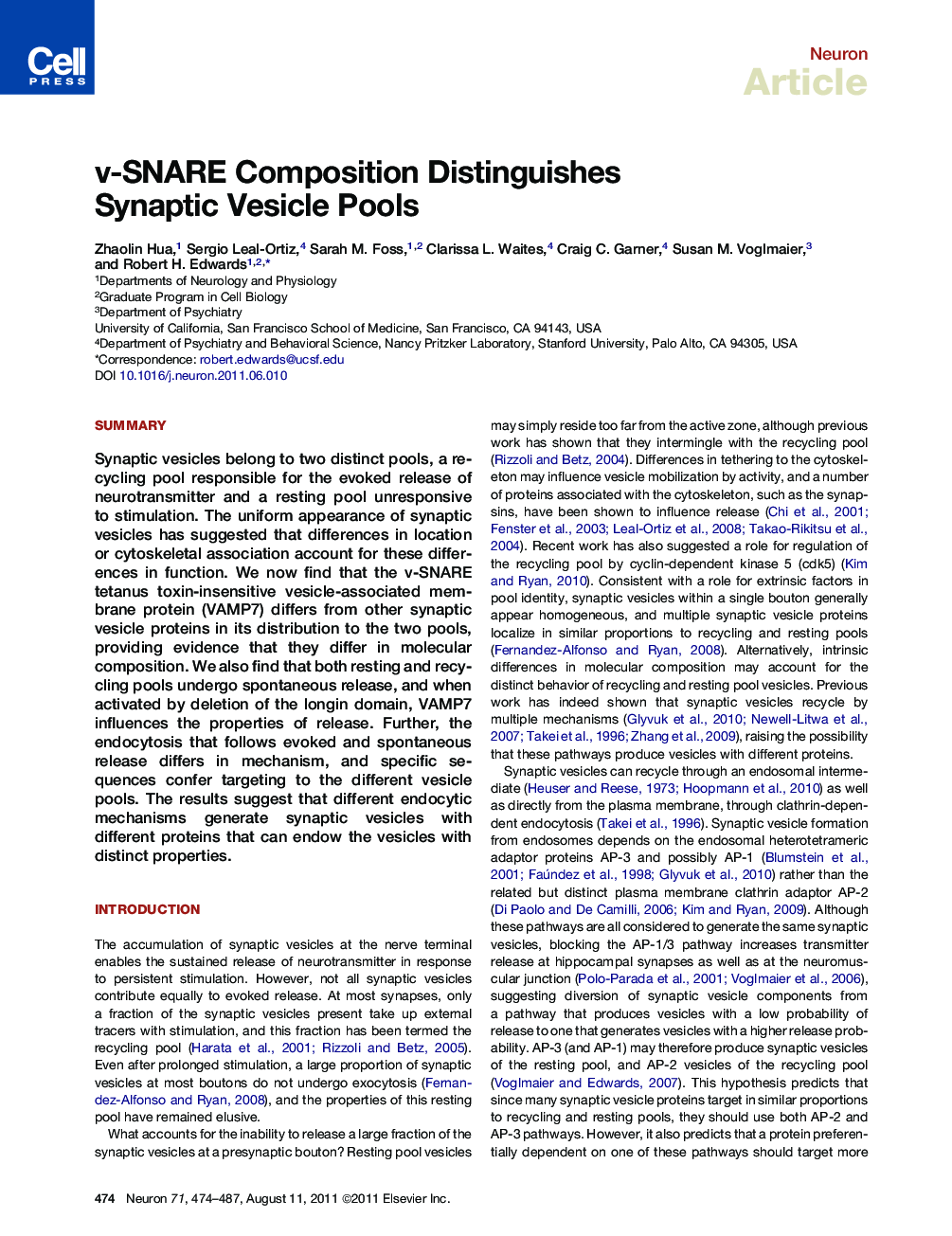| Article ID | Journal | Published Year | Pages | File Type |
|---|---|---|---|---|
| 4321993 | Neuron | 2011 | 14 Pages |
SummarySynaptic vesicles belong to two distinct pools, a recycling pool responsible for the evoked release of neurotransmitter and a resting pool unresponsive to stimulation. The uniform appearance of synaptic vesicles has suggested that differences in location or cytoskeletal association account for these differences in function. We now find that the v-SNARE tetanus toxin-insensitive vesicle-associated membrane protein (VAMP7) differs from other synaptic vesicle proteins in its distribution to the two pools, providing evidence that they differ in molecular composition. We also find that both resting and recycling pools undergo spontaneous release, and when activated by deletion of the longin domain, VAMP7 influences the properties of release. Further, the endocytosis that follows evoked and spontaneous release differs in mechanism, and specific sequences confer targeting to the different vesicle pools. The results suggest that different endocytic mechanisms generate synaptic vesicles with different proteins that can endow the vesicles with distinct properties.
► Synaptic vesicle pools differ in protein composition ► The resting pool of synaptic vesicles undergoes spontaneous release ► Deletion of the longin domain enables VAMP7 to promote synaptic vesicle exocytosis ► Different endocytic pathways generate different synaptic vesicle pools
